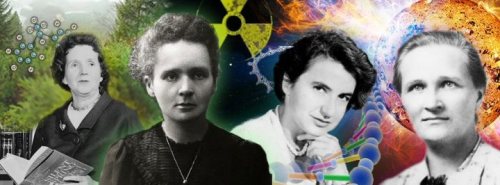
—Sue V. Rosser
The Proceedings of the National Academy of Sciences published an article last September that caused quite a stir around the country. In it, a group of researchers at Yale reported groundbreaking findings from a recent study on gender bias in science. The September 24, 2012 New York Times article, “Bias Persists for Women of Science, a Study Finds”, emphasized the major points of similar media reports of the Yale study: chemistry, biology and physics professors at six U.S. research universities rated a male applicant for a laboratory manager position as significantly more competent and hirable than the identical female applicant. The bias was pervasive, resulting from cultural influences rather than overt discrimination; and women professors were just as biased against the women students as were the men professors, although age, field or tenure status did not appear to affect the results.
To date, at least thirty-five colleagues have e-mailed me a copy of the article, knowing my work and interest in attracting and retaining women in science and engineering. Many asked whether I was surprised that such bias still existed after all of these years of attention to the general issue of women in science, as well as the particular training of scientists to be rational in analysis of data.
I had to tell them that regrettably, I was not surprised at all. In Breaking into the Lab: Engineering Progress for Women in Science, I revealed my experiences as both a woman scientist and dean at a doctoral research extensive institution who has worked in women’s studies for thirty years. My experiences are complemented with data from interviews of current scientists in response to the questions about why there are so few women scientists, especially at elite research institutions, what happens to successful women as they become senior and consider going into administration, and whether women are excluded from leading edge work in commercialization of science and technology transfer.
The data from the responses and interviews of current women scientists, some junior and some about ten to twenty years younger than I, document that although the pipeline of women in most STEM fields has increased substantially, many of the same issues for women in science and engineering persist today.
Overt sexual harassment from a supervisor has become less frequent, yet the structures of institutions and science make junior women question whether they can balance career and family. Time management, isolation, lack of camaraderie, poor mentoring, gaining credibility and respectability from colleagues and superiors, as well as issues for dual-career couples in science remain as problems. Sexual harassment and gender discrimination still occur all too frequently.
Why does the loss of women from every level of the science pipeline from student to head of the laboratory to president of the university matter? The importance of the leadership of women in science has been illustrated in other areas such as health; not until a substantial number of women had entered the professions of biology and medicine were biases from androcentrism exposed. Once the possibility of androcentric bias was discovered, the potential for distortion on a variety of levels of research and theory was recognized: the choice and definition of problems to be studied, the exclusion of females as experimental subjects, bias in the methodology used to collect and interpret data, and bias in theories and conclusions drawn from the data.
This realization uncovered gender bias, which had distorted some medical research. Excessive focus on male research subjects and definition of cardiovascular diseases as “male” led to under-diagnosis and under-treatment of the disease in women. These studies led Bernadine Healy, a cardiologist and first woman director of the National Institutes of Health, to characterize the diagnosis of coronary heart disease in women as the Yentl syndrome: “Once a woman showed that she was just like a man, by having coronary artery disease or a myocardial infarction, then she was treated as a man should be” (Healy, 1991, p. 274). The male-as-norm approach in research and diagnosis, unsurprisingly, was translated into bias in treatments for women. Women exhibited higher death rates from angioplasty and coronary bypass surgery because the techniques had been pioneered using male subjects.
Particularly with the increased emphasis upon translation of basic research into applications, the presence of diversity in the STEM workforce becomes more critical. More than in basic research, applications for technology and inventions depend upon the experiences and ideas of the designers. Excessive dominance of one group, such as the overwhelming percentage of males in engineering and the creative decision-making sectors of the technology workforce, may result in bias in the technologies produced, such as the air bag fiasco suffered by the U.S. auto industry. More women, as well as more diversity in general, in the composition of the STEM workforce not only helps to guard against such bias but may increase the numbers of new ideas that will help people in their daily lives and improve society.
Sue V. Rosser is Provost and Vice President for Academic Affairs and Professor of Women and Gender Studies and Sociology at San Francisco State University. She is the author of Breaking into the Lab: Engineering Progress for Women in Science (NYU Press, 2012).
